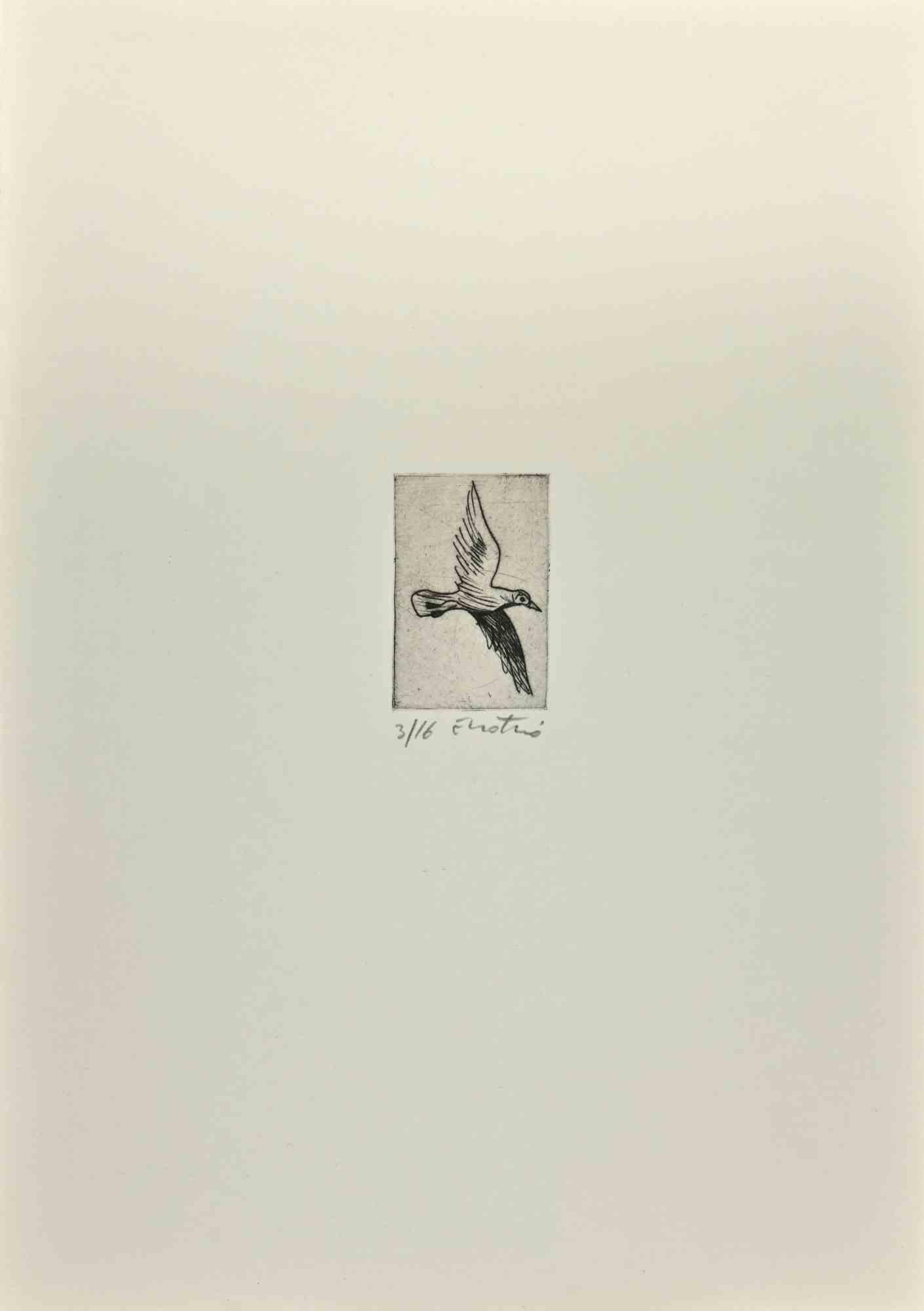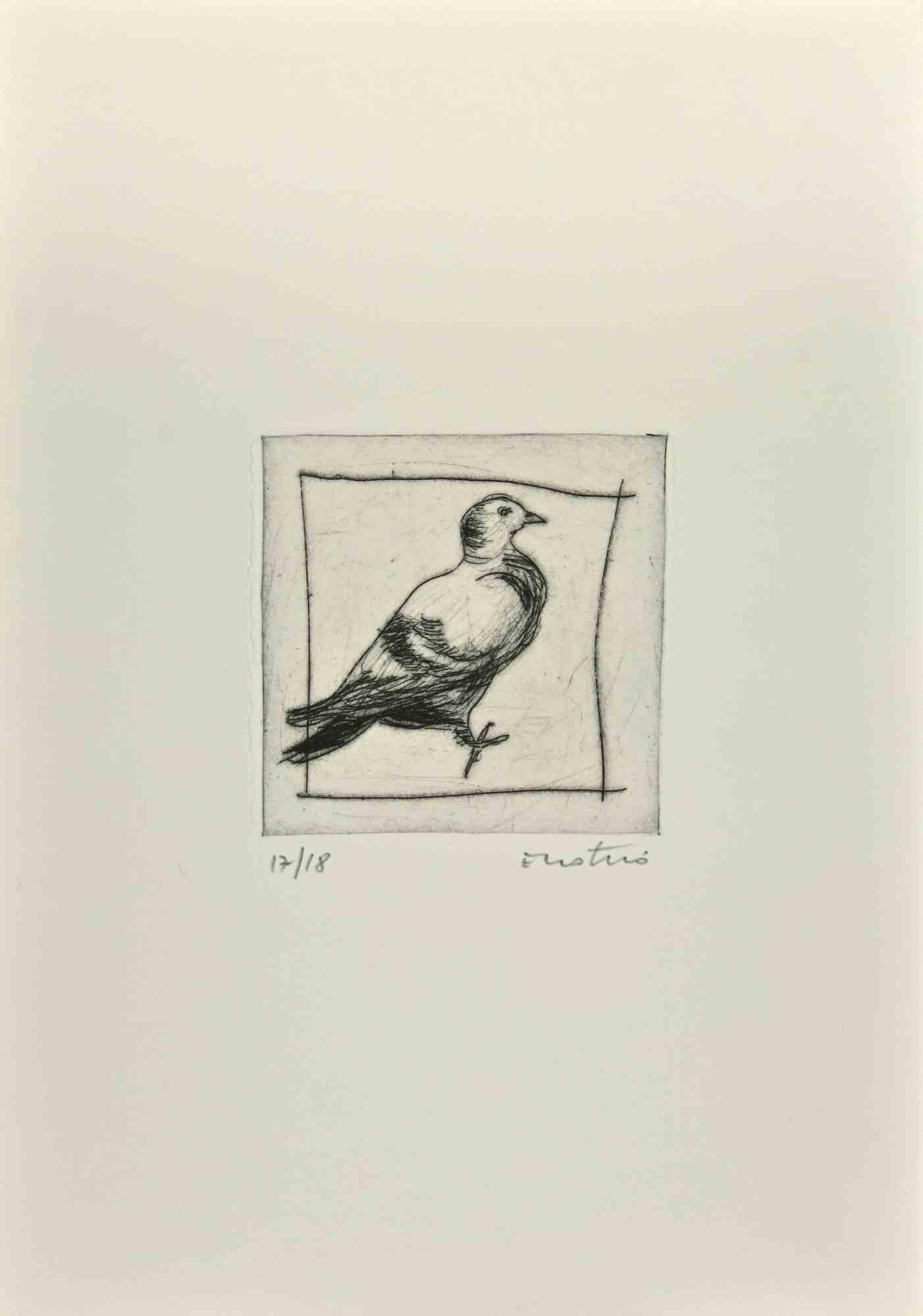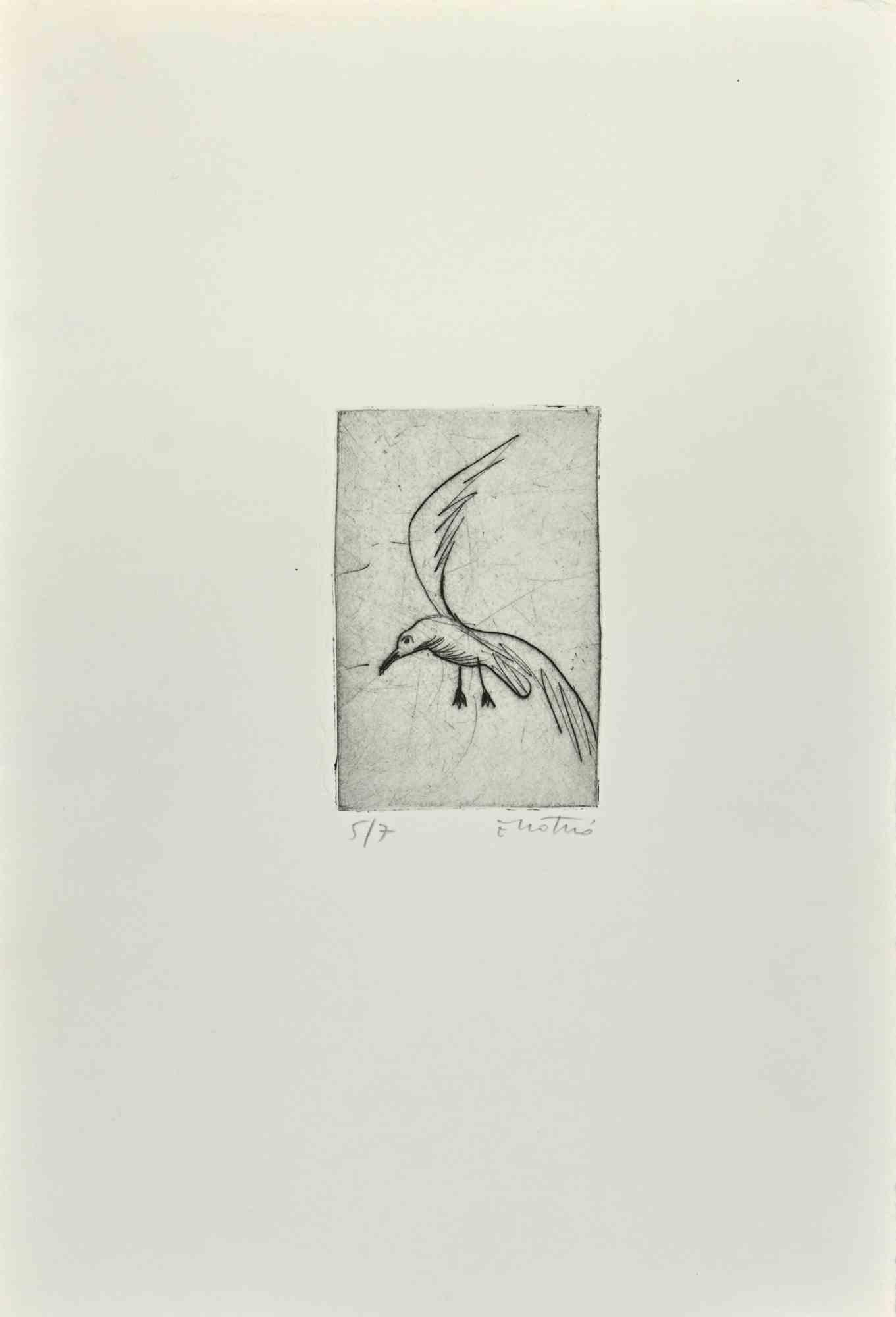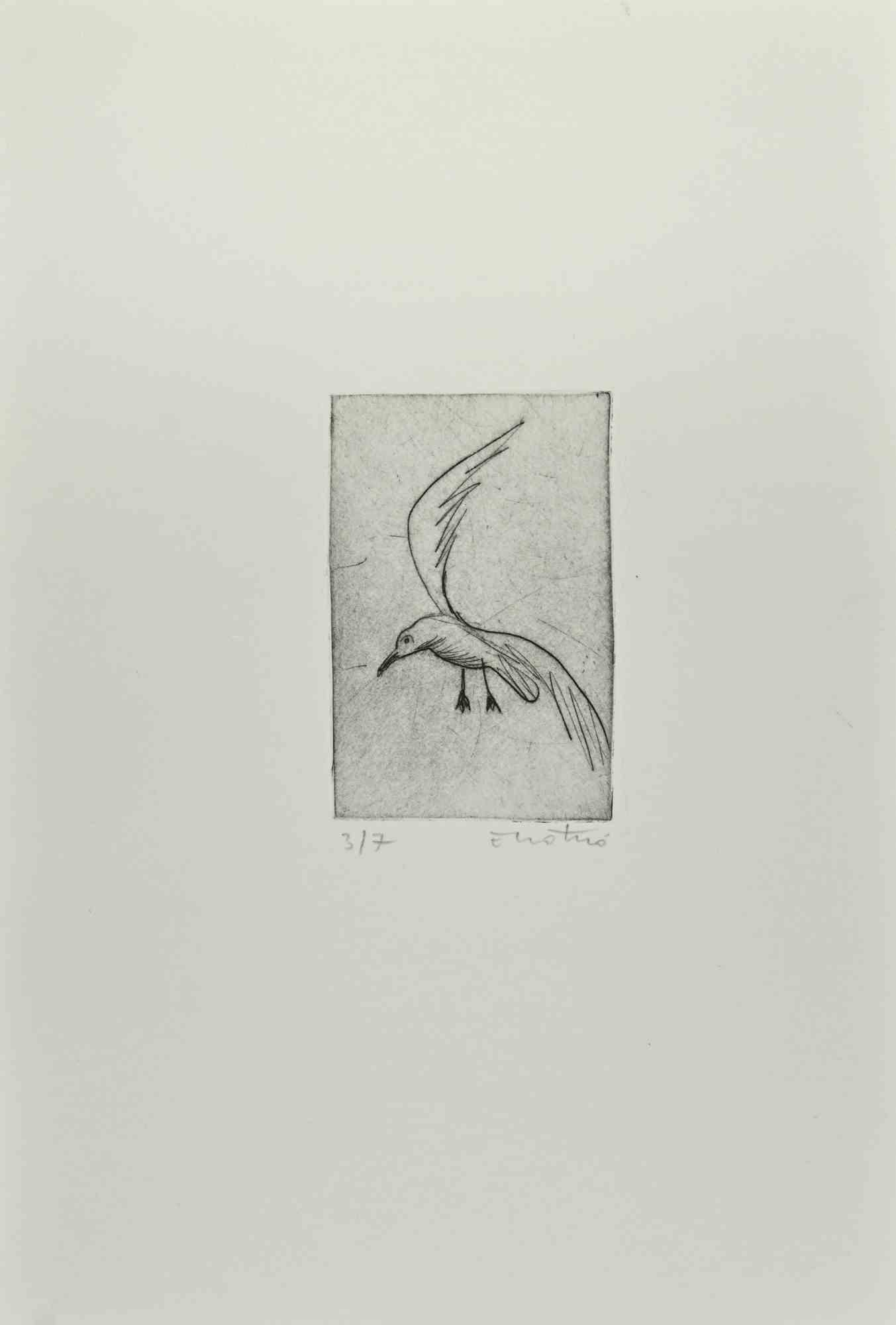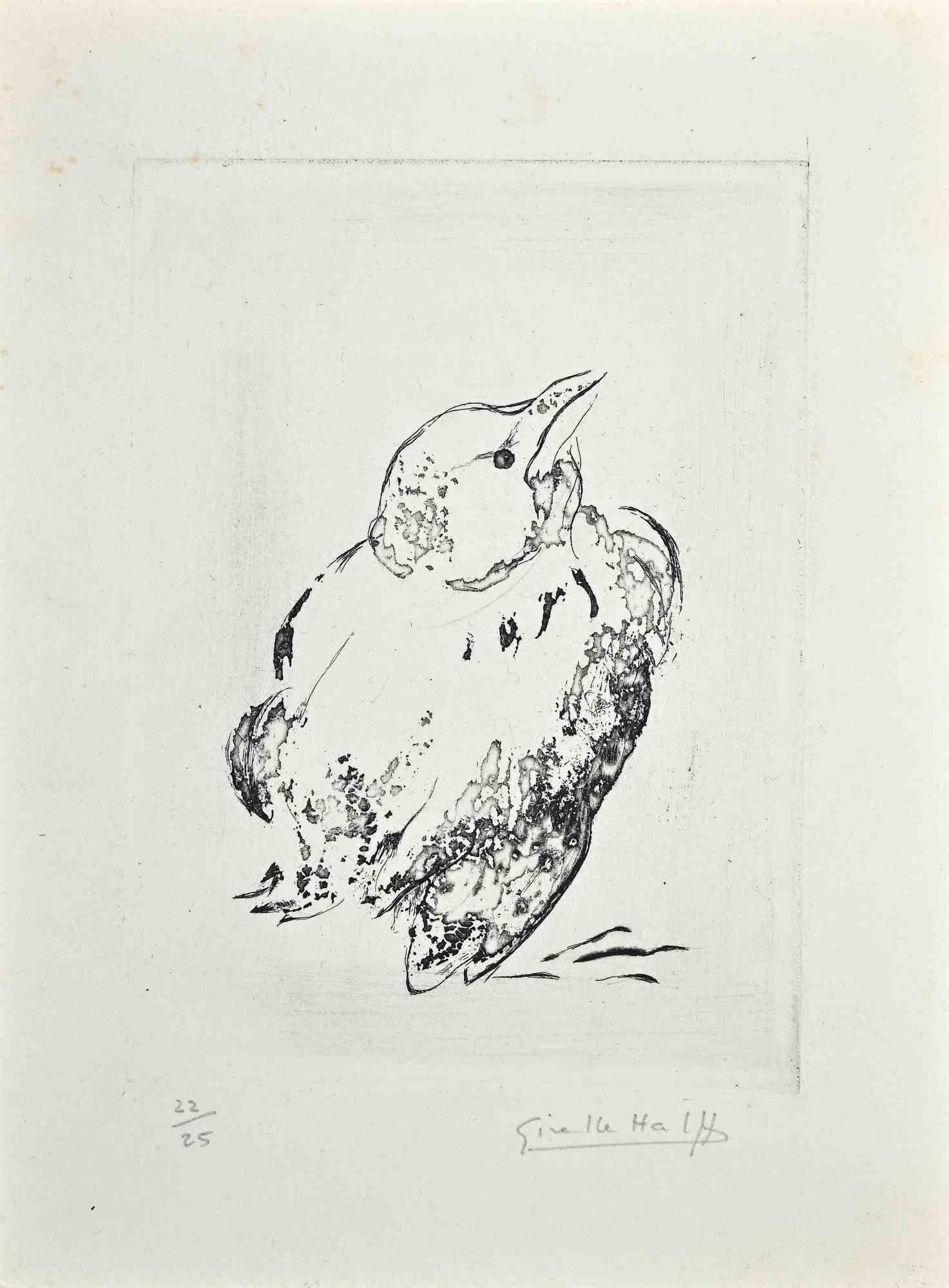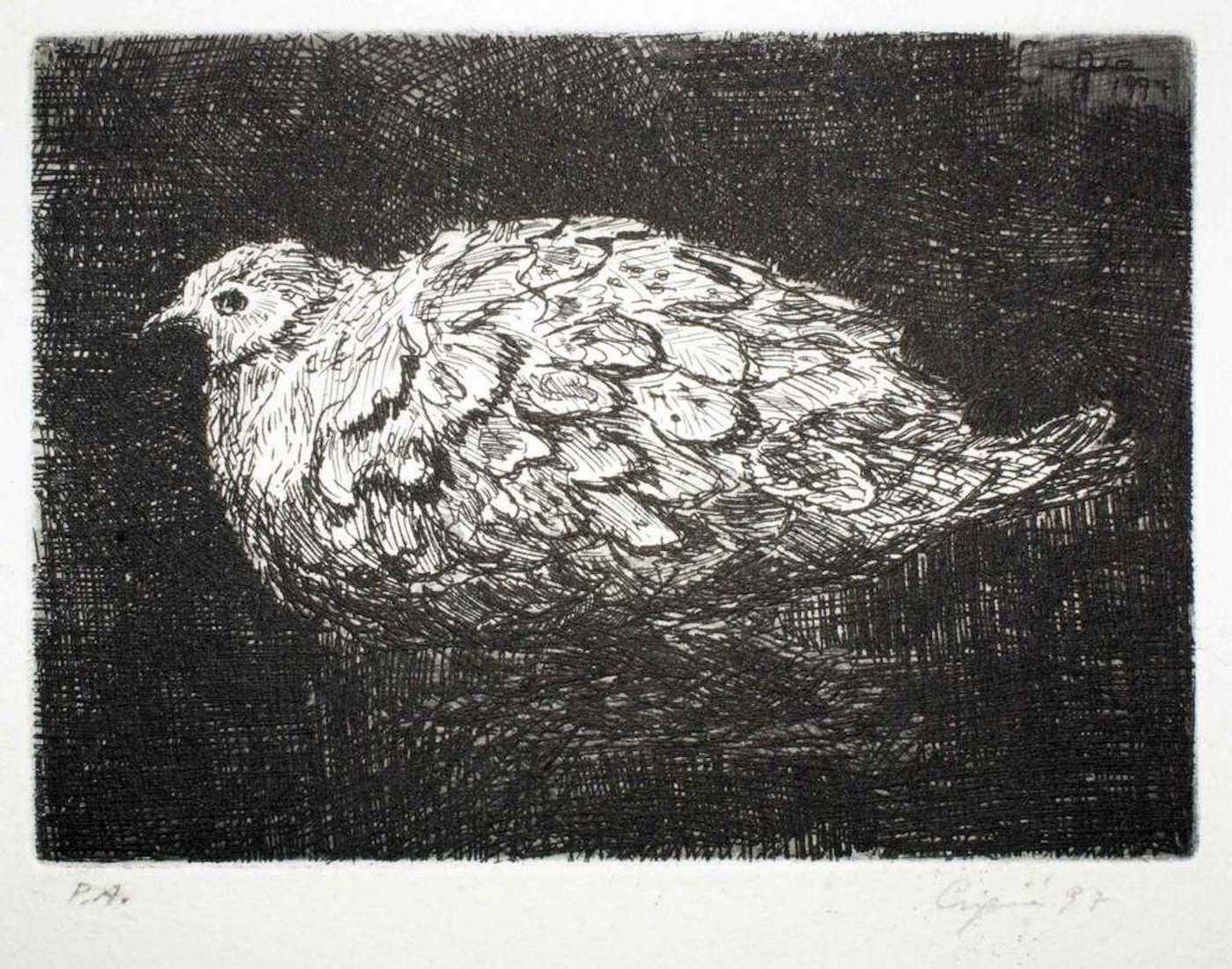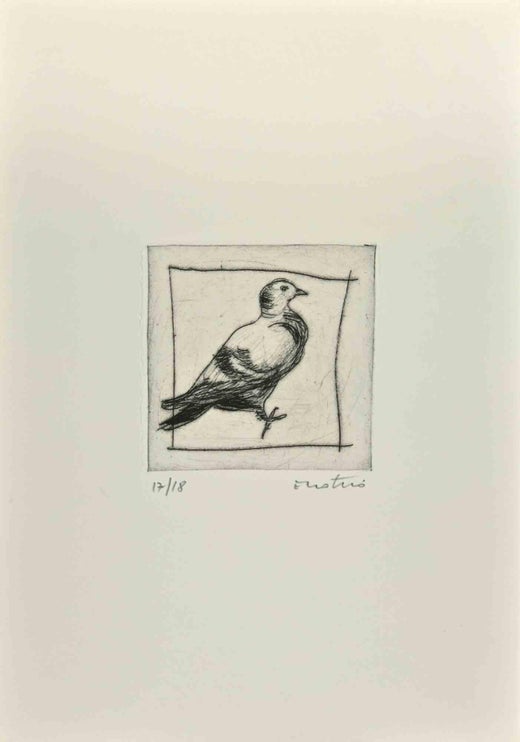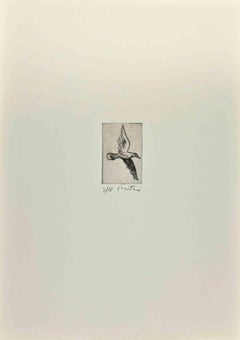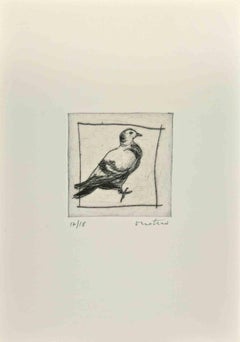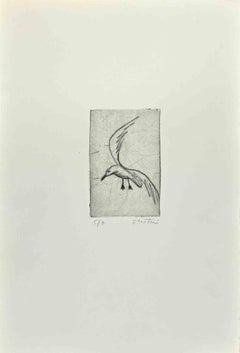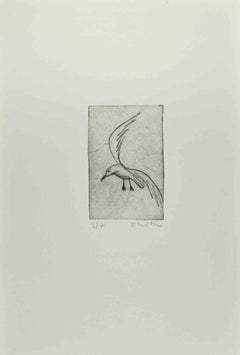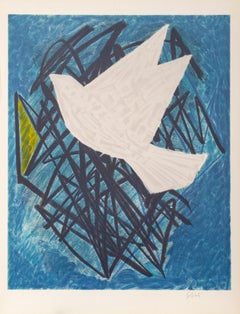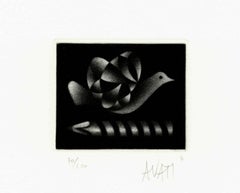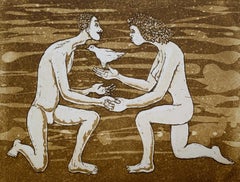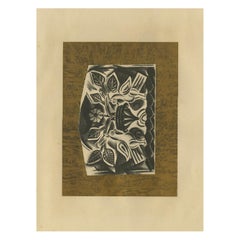Items Similar to Dove - Etching by Enotrio Pugliese - 1963
Want more images or videos?
Request additional images or videos from the seller
1 of 2
Enotrio PuglieseDove - Etching by Enotrio Pugliese - 19631963
1963
$472.64
£359.69
€400
CA$661.62
A$729.05
CHF 378.15
MX$8,671.12
NOK 4,783.47
SEK 4,481.10
DKK 3,047.15
About the Item
Dove is an Etching realized by Enotrio Pugliese in 1963.
Limited edition of 16 copies numbered and signed by the artist.
Good condition on a white cardboard.
Enotrio Pugliese (May 11, 1920 - August 1989) was an Italian painter. Born in Buenos Aires to a Calabrian family who emigrated to Argentina at the beginning of the century. His first contacts with the world of culture and art take place in a climate characterized by the relationships that the family (even after returning to Italy in 1926) has with the musical environment. For a long time his father was a well-known cellist, first at the "Colón" in Buenos Aires, then he was a member of celebrated "chamber quartets".
In Calabria as a boy Enotrio (this will be his stage name) begins to realize the multiple social, economic and moral reasons that practically "force" many Italians to try the ways of emigration. These reasons that gradually substantiated his life choices, even after 1939, when he obtained his classical maturity, he moved to Rome and enrolled in the Faculty of Chemistry, in the belief that he could then emigrate with better job prospects. His true spiritual interests began to manifest themselves in the field of the figurative arts, of which he understood the various ferments through the reading of magazines and weeklies. After the Second World War he attended the studio of the painter Domenico Purificato and later took part in the most important national exhibitions and awards. He was a sensitive interpreter of the natural beauty but also of the misery and hopes of Calabria, to which he was very attached.
He died in Pizzo Calabro in August 1989. He is buried in the cemetery of San Costantino Calabro, the birthplace of his family, to whom he donated the structure of the Casa del Popolo.
- Creator:Enotrio Pugliese (1920 - 1989, Italian)
- Creation Year:1963
- Dimensions:Height: 13.78 in (35 cm)Width: 9.26 in (23.5 cm)Depth: 0.04 in (1 mm)
- Medium:
- Movement & Style:
- Period:
- Framing:Framing Options Available
- Condition:Insurance may be requested by customers as additional service, contact us for more information.
- Gallery Location:Roma, IT
- Reference Number:Seller: T-1358061stDibs: LU650311344842
undefined
About the Seller
4.9
Platinum Seller
Premium sellers with a 4.7+ rating and 24-hour response times
1stDibs seller since 2017
7,815 sales on 1stDibs
Typical response time: 1 hour
- ShippingRetrieving quote...Shipping from: Monaco, Monaco
- Return Policy
More From This Seller
View AllDove - Etching by Enotrio Pugliese - 1963
Located in Roma, IT
Dove is anEtching realized by Enotrio Pugliese in 1963.
Limited edition of 16 copies numbered and signed by the artist.
Good condition on a white cardboard.
Enotrio Pugliese (May ...
Category
20th Century Contemporary Figurative Prints
Materials
Etching
Pigeon - Etching by Enotrio Pugliese - 1963
Located in Roma, IT
Pigeon is an Etching realized by Enotrio Pugliese in 1963.
Limited edition of 18 copies numbered and signed by the artist.
Good condition on a white cardboard.
Enotrio Pugliese (M...
Category
1960s Contemporary Figurative Prints
Materials
Etching
Seagull - Etching by Enotrio Pugliese - 1963
Located in Roma, IT
Seagull is an Etching realized by Enotrio Pugliese in 1963.
Limited edition of 7 copies numbered and signed by the artist.
Good condition on a white cardboard.
Enotrio Pugliese (M...
Category
1960s Contemporary Figurative Prints
Materials
Etching
Seagull - Etching by Enotrio Pugliese - 1963
Located in Roma, IT
Seagull is an Etching realized by Enotrio Pugliese in 1963.
Limited edition of 7 copies numbered and signed by the artist.
Good condition on a white cardboard.
Enotrio Pugliese (M...
Category
1960s Contemporary Figurative Prints
Materials
Etching
Pigeon - Original Etching by Giselle Hallf - Mid-20th Century
By Giselle Halff
Located in Roma, IT
Pigeon is an original etching realized by Giselle Halff in the mid-20th Century
Good condition.
Pencil signature.
Edition of 25 copies signed and dated.
Category
Mid-20th Century Modern Figurative Prints
Materials
Aquatint, Etching
Dove - Etching by Valerio Cugia - 1997
By Renato Brozzi
Located in Roma, IT
Artist's proof, hand signed by the Artist.
Excellent conditions.
Category
Early 20th Century Animal Prints
Materials
Etching
You May Also Like
The Dove, Modern Lithograph by Emile Gilioli
By Émile Gilioli
Located in Long Island City, NY
An original hand-signed limited edition lithograph by famed sculptor Emile Gilioli. Edition of only 75. Émile Gilioli (b. Paris, 10 June 1911, d. Paris,...
Category
1960s Modern Animal Prints
Materials
Lithograph
The Dove - Original handsigned black-manner etching - 100 copies
By Mario Avati
Located in Paris, IDF
Mario AVATI
The Dover
Original black manner etching
Handsigned in pencil
Numbered / 100 copies
On BFK Rives vellum 30 x 19.5 cm (c. 12 x 8 in)
Excellent condition
Category
1970s Modern Animal Prints
Materials
Etching
A birdie - Contemporary Figurative Etching Print, Nude, Monochromatic
By Czeslaw Tumielewicz
Located in Warsaw, PL
Polish painter and graphic designer, Czeslaw Tumielewicz was born in 1942.
In 1968, he studied at the Architecture faculty of Gdank, before continuing his course at the Technical Un...
Category
2010s Contemporary Figurative Prints
Materials
Paper, Etching
Die Tauben, 1923: Symbolic Dove Lithograph by Nathan Altmann
Located in Langweer, NL
This artwork, presumably from Nathan Altman's "Jüdische Graphik" series, showcases a stunning lithograph of doves amongst foliage, rendered in black and white against a burnished gold background. The intricacy of the design, combined with the symbolic choice of doves—often representing peace or the Holy Spirit—suggests a layer of deep cultural or spiritual significance. The style retains Altman's avant-garde influences, merging cubist shapes and forms to create a dynamic and visually engaging composition.
The print, possibly titled "Die Tauben" (The Doves), would be another example of Altman's ability to convey powerful themes through the medium of print, aligning with his other works from the 1923 series in terms of technique and thematic exploration. The limited edition nature of these prints adds to their rarity and desirability among collectors and scholars of both Jewish art and avant-garde movements of the early 20th century.
As with the other prints from this series, the limited edition of only 250 copies increases its rarity and value. Altman's work not only captures significant biblical narratives but also reflects the broader themes of cultural identity and modernist experimentation in the early 20th century.
Altmann’s choice of a burnished gold background not only enriches the visual impact but also elevates the symbolic elements, giving the artwork a solemn and revered quality. This specific piece, like others from the series, was produced in Berlin by the publisher "Petropolis," reflecting the vibrant Jewish artistic community that existed in pre-war Europe. Altmann’s work, especially given his background as a Jewish artist in Soviet Russia, often navigated between his cultural identity and the broader avant-garde movements, making each of his pieces historically and artistically significant. This print, considering its rarity and the mystery surrounding the number of surviving copies, is an exceptional representation of Jewish cultural history intertwined with early 20th-century art movements.
Nathan Altman was an influential figure in the Russian and Soviet avant-garde movement. Born in 1889 in Vinnytsia, Ukraine, he studied at the Odessa Art School, later moving to Paris to further his education at the Academie de la Grande Chaumiere. Altman's style evolved over the years, showing strong influences from Cubism and Futurism, which are evident in his approach to stage design and book illustration as well.
Altman's contributions extend beyond visual arts; he was also notable for his set designs for Jewish theaters...
Category
Vintage 1920s Prints
Materials
Paper
"Pajaro (Parrot), " Black and White Lithograph signed by Arthur Secunda
By Arthur Secunda
Located in Milwaukee, WI
"Pajaro" is an original black and white lithograph by Arturo A. Secunda. It depicts a parrot. The artist signed the piece in the lower right and wrote the title and the edition number (27/100) in the lower left.
11 1/2" x 17 1/2" art
22 3/4" x 28 1/2" frame
Arthur Secunda is an internationally renowned artist whose career has spanned five decades. His one man shows have been seen worldwide in numerous galleries and museums in France, Sweden, Belgium, Holland, Spain, Israel, and Japan. In the United States, he is represented in most major museums of the country, including the National Gallery of Art and the Smithsonian Museum in Washington D.C., the Museum of Modern Art in New York, the UCLA Museum, the Detroit Art Institute, and the Phoenix Museum. Known for his brilliant collages and striking graphics, Secunda has mastered all types of printmaking, even making his own paper in France and Japan. His impressive body of work includes painting, mixed media, polyester assemblage, ceramics and welded sculpture. His studies began at the Detroit Art Institute as a teenager, and continued in New York at the Art Students League and New York University. After a stint in the Air Force as an artist, he then studied, thanks to the GI bill, in Mexico, Paris and Italy, with many great artists and teachers, beginning a lifelong propensity for travel-- living and working in other countries. For decades, he maintained studios in Paris and LA.
He considers himself a landscape artist, and has developed his own iconography in representing nature, the land and its forms, as well as corresponding inner landscapes. He is known for a specific kind of color gradation and blending of forms in many media. His work tends to oscillate between the serene--striated colors in landscapes--to the expressive, as in many of his oil paintings.
After years in Paris, Secunda has maintained a studio in Scottsdale for the last decade--doing what he has done in all of the other places he has liv ed and worked in the last 50 years--creating imagery.
He has worked as a jazz musician--in Paris in the early days to support himself, and as a milkman; as an art critic, lecturer, curator, writer and publisher. Periodically, he consults at NASA where he is an image visualizer, helping translate scientific data into visual images. Highly respected as a teacher, he will spend August in Lacoste, France teaching a master class in collage and the creation of handmade artists books. (Secunda has an international following of people who subscribe and collect his dada art "books".)
Next year, he will have a one man exhibition at the University of Judaism in Los Angeles, presenting a never before seen series of expressive portrait monotypes of noted art personalities, after which he will exhibit early Mexican woodcuts...
Category
1950s Animal Prints
Materials
Lithograph
Edgar Britton ‘Bird #2’ 1949 Vintage Modernist Black-and-White Monotype Print
Located in Denver, CO
Bird #2 is a striking vintage black-and-white monotype print by celebrated Colorado modernist Edgar Britton (1901–1982), created in 1949. This original mid-century work presents a bo...
Category
1940s American Modern Animal Prints
Materials
Monotype
More Ways To Browse
Antique Poupee
Antique Star Chart
Burt Lancaster
Chagall 1967
Chagall Lion
Chagall Rachel
Charles Leandre
Dali Beatrice
Daumier Les Gens De Justice
De La Fille
Elizabeth Ii Signed
Erotica Prints
Guerin Prints
Japanese Beauties Prints
John Hay Whitney
Joseph And His Brothers
Kaws Pink Companion
Keith Haring Bill T Jones
